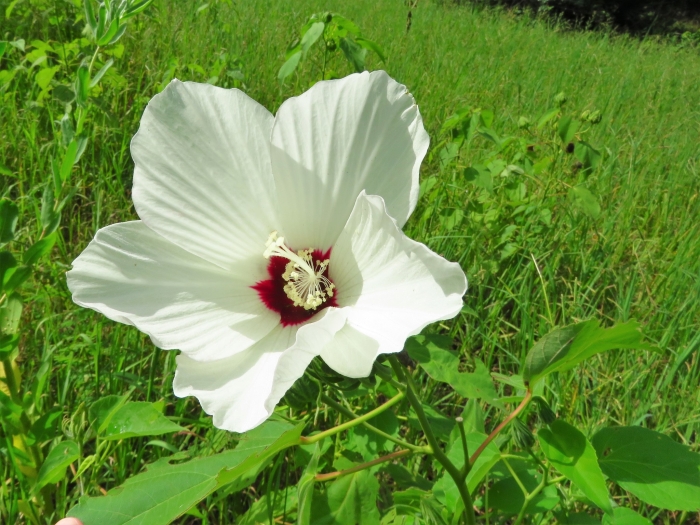Woolly Rosemallow
(Hibiscus lasiocarpos)
Woolly Rosemallow (Hibiscus lasiocarpos)
/
/

Annika Lindqvist
CC BY 4.0



















































Estimated Native Range
Summary
Woolly Rosemallow is valued for its large, attractive flowers and is often used in naturalistic plantings, such as in rain gardens or as part of a pollinator-friendly garden. It is also suitable for wetland restoration projects. This species thrives in full sun and requires medium to high amounts of water, preferring soils with medium drainage. While it is relatively easy to maintain, it can be susceptible to rust and fungal leaf spots. Gardeners should be aware that in some areas, it may self-seed and spread, requiring control measures to prevent unwanted naturalization.CC BY-SA 4.0
Plant Description
- Plant Type: Shrubs
- Height: 3-7 feet
- Width: 2-3 feet
- Growth Rate: Moderate
- Flower Color: White
- Flowering Season: Summer, Fall
- Leaf Retention: Deciduous
Growth Requirements
- Sun: Full Sun
- Water: Medium, High
- Drainage: Medium
Common Uses
Bee Garden, Bird Garden, Butterfly Garden, Deer Resistant, Hummingbird Garden, Showy Flowers, Water Garden
Natural Habitat
Variety of habitats including riparian zones, marshes, wet woods, prairies, and plains
Other Names
Common Names: Rosemallow , Crimsoneyed Rosemallow , Marshmallow
Scientific Names: Hibiscus lasiocarpos , Hibiscus californicus , Hibiscus lasiocarpos var. occidentalis , Hibiscus moscheutos subsp. lasiocarpos , Hibiscus moscheutos var. lasiocarpos , Hibiscus leucophyllus , Hibiscus platanoides , Hibiscus langloisii , Hibiscus lasiocarpos var. californicus , Hibiscus moschatus subsp. lasiocarpos , Hibiscus moschatus var. lasiocarpos
GBIF Accepted Name: Hibiscus moscheutos subsp. lasiocarpos (Cav.) O.J.Blanch.